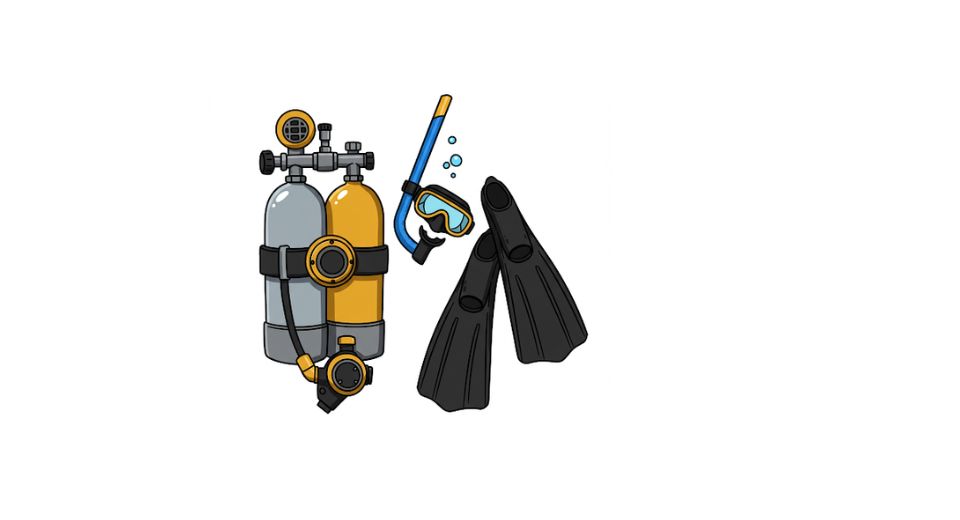
Apr 10, 2025

The latest research results published by Metastat Insight reflect the future that the expanding horizon sees across the Global Scuba Diving Equipment Market. What is even more in-depth is that it is a greater reflection of how recreational preferences, technological innovation, and changing safety standards impact a specialized industry. Although this market is more usually invisible to the mainstream consumer narratives, it has a depth within it that mirrors the oceans its equipment is meant to explore. From hobbyist divers exploring coral reefs to professionals engaged in underwater research or rescue operations, the demand for reliable, functional, and advanced equipment is now greater than ever.
Global Scuba Diving Equipment market is estimated to reach $2,435.12 million in 2025 with a CAGR of 3.6% from 2025 to 2032.
Diving, though it's frequently publicized as an activity of leisure, requires almost as much preparedness as a very high intensity sport. Masks, fins, snorkels, buoyancy compensators, regulators, wetsuits, dive computers. Those are the tools of the trade; they have got to perform under pressure and often hundreds of feet below the surface. Manufacturers are pouring resources into material sciences these days, all of which makes for better product durability associated with ergonomic design. Aside, of course, from the fact that there is increasing emphasis on lightweight gear and compact travel-friendly kits, would adapt the demand of travel-bound consumers around the world. All these presentations are not just but tangible since it includes performance and comfort that any diver would want as he explores rugged underwater terrain.
Thus, awareness levels about marine conservation work have helped shape this phenomenon in the market. Modern divers aren't just adventurers anymore; they are storytellers, content creators, and advocates for aquatic life. This sentiment has given impetus to equipment manufacturers' sustainable manufacturing practices. From eco-friendly wetsuits to biodegradable packaging, the industry is now percolating into environmental consciousness but without compromising quality or performance. This subtle shift is a reflection of broader consumer fulfillment in demanding responsibility, which fits into the larger global picture of sustainability.
Diving is now getting broader wings; it is not confined to the coastline of affluent nations anymore. Today, as countries pour their money into tourism infrastructure, waters that have never been tapped are accessible and can be enjoyed by international travelers. This translated into opportunities now for local entrepreneurs and even multinational brands to spread their businesses-more employment opportunities, training, and development can be seen in coastal communities. Scuba diving schools are emerging, rental services have been taken down to new markets, and gear outlets which are pushing equipment and the service economy further boost demand for equipment in all levels of skills and underwater conditions.
Digitalization brought a revolutionary transformation into the industry. Dives computer takes over the role of depth gauges, giving real-time information about decompression limits, water temperatures, and ascent rates. Dives are getting data-rich experiences now, with wireless tank pressure transmitters, heads-up display masks, and GPS tracking devices integrated into the dives. This integration of technology promises more than offering a safe diving experience, but it allows the divers to keep track of logs and activities that are almost impossible just a few decades ago. With the emerging streamlining of wearables technology, this could become even better in terms of intuitive and personalized applications in diving equipment.
They have raised their standards in training and certification criteria along with progress. Today, equipment handling does not suffice; divers need to be knowledgeable about the aquatic environment, emergency protocols, and conservation ethics. The result of this development is a higher demand for high-quality gear that supports training programs and simulation environments. Equipment is also designed to cater to the beginner, as long as it does not overwhelm but meets the demands of the experts. This fine line is a constant battle for the manufacturers, faced with innovation and user-focused design.
A competitive spirit has been infused into the market due to leading companies, with new entrants coming in to infuse fresh ideas. Modular accessories, customized options, and co-designed models with consumers are becoming the norm. Whether it is a personalized regulator or wetsuit concept for certain thermal protection, the markets are being pushed further to what it can offer by consumer demand. Digital platforms have since facilitated direct to consumer selling with the elimination of traditional retail barriers to add more transparency in the pricing procedure and selection of products.
Metastat Insight comprehensive survey brings the Global Scuba Diving Equipment Market into clearer focus—not simply as a class of commercial activity but as an area where innovation, exploration, and responsibility intersect. Its trajectory seems destined to continue to adapt under the influence of environmental agendas, evolving technology, and a growing community of enthusiasts and professionals who rely on this equipment in pursuing their underwater dreams. As new frontiers of diving open and as a nearer relationship is formed between man and the ocean, this market is likely to be responsive with equipment tending as much to adventure as preservation.
Drop us an email at:
Call us on:
+1 214 613 5758
+91 73850 57479